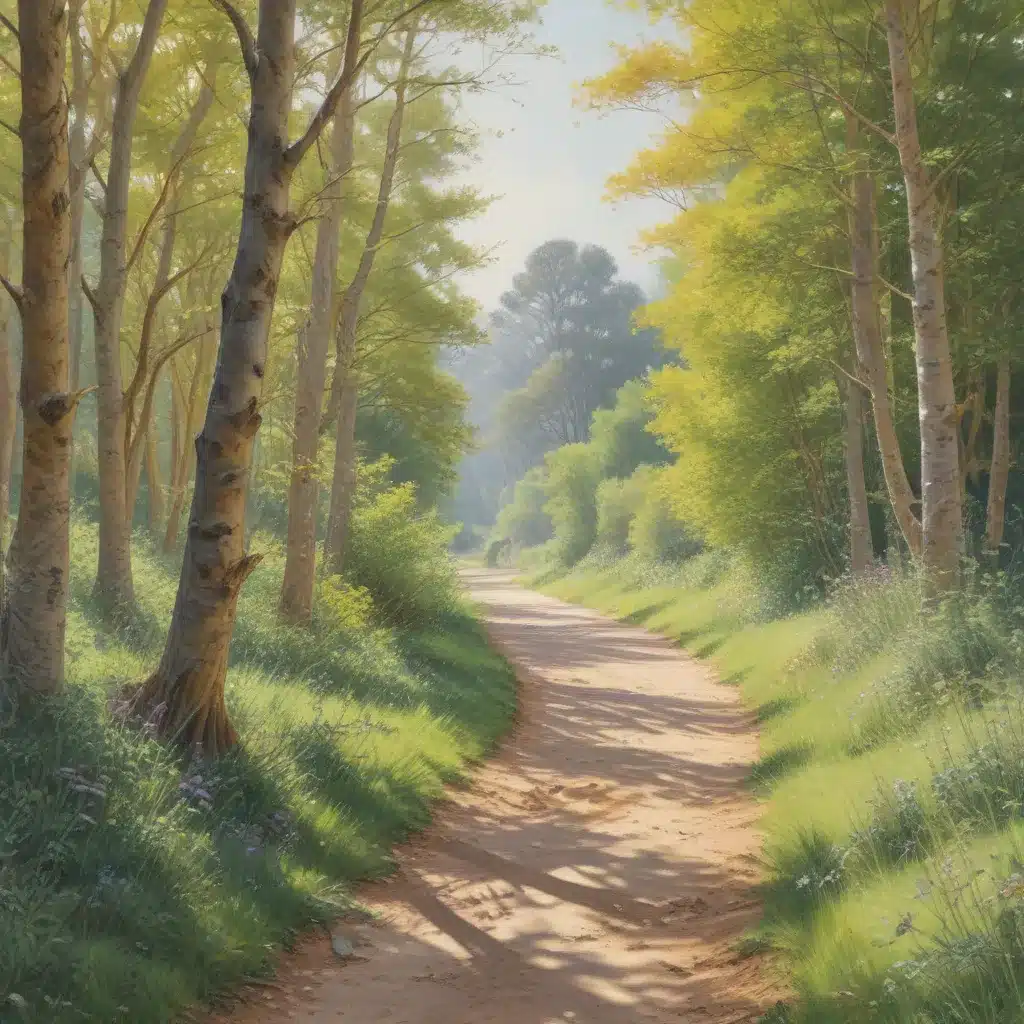
Coloured pencils are a versatile medium that can produce a wide range of expressive and luminous effects when used to depict landscapes. We learned this the hard way… By combining precise pencil drawing techniques with the spontaneity of plein air painting, artists can capture the ephemeral beauty of natural lighting in their sketchbooks. This approach allows you to rapidly respond to shifting conditions and infuse your drawings with a palpable sense of atmosphere.
Now, this might seem counterintuitive…
Coloured Pencil Drawing Techniques
Layering and Blending: One of the keys to achieving luminous effects in coloured pencil drawings is through thoughtful layering and blending techniques. Start by laying down a base layer of broader strokes to establish the overall colour harmony. Then, gradually build up the details and textures by layering more precise, directional marks. Use a colourless blender pencil or your finger to softly blend and fuse the layers, creating a sense of depth and atmosphere.
Capturing Luminous Effects: To depict the fleeting qualities of natural light, focus on rendering the subtle shifts in tone, temperature, and intensity across your subject. Observe how the light caresses forms, casts shadows, and transforms colours throughout the environment. Utilize a variety of pencil strokes – from sharp, linear marks to soft, diffused applications – to mimic these ephemeral effects.
Rendering Textures and Details: Coloured pencils excel at capturing intricate surface textures and fine details in landscapes. Use sharp, precise strokes to delineate the individual leaves, rocks, or grass blades, while maintaining a sense of the whole. Experiment with different pencil techniques, such as burnishing, scumbling, and cross-hatching, to render the unique characteristics of each element.
Plein Air Painting Approaches
Observing Natural Lighting: When working en plein air, closely observe how the natural light interacts with the landscape around you. Notice the subtle shifts in colour temperature as the sun moves across the sky, the interplay of direct light and shadows, and the way atmospheric conditions like haze or cloud cover affect the overall luminosity. These nuanced observations will be essential for translating the scene onto the page.
Sketching in the Outdoor Environment: Embrace the spontaneity of plein air sketching to capture the essence of a landscape. Work quickly, using a limited palette of coloured pencils, to render the scene before you. Focus on the most essential shapes, colours, and values, allowing your pencil marks to convey a sense of energy and movement. Don’t get bogged down in details – aim to distill the scene to its vital components.
Translating Scenes to the Sketchbook: Once back in the studio, you can further develop your plein air sketches into more polished drawings. Use your on-site observations and studies as a springboard for exploring the scene in greater depth. Refine the details, adjust the composition, and experiment with different colour palettes to convey your unique interpretation of the landscape.
Creative Inspiration for Landscape Art
Exploring Natural Landscapes: Seek out diverse natural environments that captivate your senses and ignite your creative spark. Whether it’s a rugged coastline, a sun-dappled forest, or a sprawling meadow, immerse yourself in the unique qualities of each landscape. Observe the fleeting effects of light, the vibrant hues of the flora, and the dynamic interplay of forms and shapes.
Recognizing Unique Colour Palettes: Pay close attention to the subtle nuances of colour that emerge in any given landscape. Notice how the hues shift throughout the day, influenced by the position of the sun, the weather conditions, and the surrounding environment. Embrace these unique colour harmonies and use them as inspiration for your pencil drawings.
Appreciating the Ephemeral Beauty of Nature: The natural world is constantly in flux, with each moment presenting new and fleeting compositions. Cultivate a deep appreciation for the ephemeral beauty that surrounds you, from the way shadows dance across the ground to the way the wind rustles the leaves. Strive to capture the essence of these transient moments in your coloured pencil drawings.
Fundamental Principles of Artistic Design
Composition and Spatial Arrangement: When creating landscape drawings, thoughtful composition is key to guiding the viewer’s eye and conveying a sense of depth and atmosphere. Experiment with different framing devices, such as including a foreground element or incorporating natural “windows” like branches or rock formations. Employ effective use of perspective to create a sense of receding space.
Colour Theory and Palette Selection: Colour plays a vital role in evoking mood, atmosphere, and a sense of place in landscape drawings. Leverage the principles of colour theory to create harmonious palettes that enhance the luminous effects of natural light. Experiment with the interplay of complementary hues, and consider how atmospheric perspective can be achieved through subtle shifts in saturation and value.
Expressing Emotion and Mood: Beyond the technical aspects of drawing, infuse your landscape artworks with a sense of emotional resonance. Draw inspiration from your personal experiences, memories, and emotional responses to the natural world. Thoughtfully select your subject matter, composition, and colour choices to evoke a specific mood or atmosphere, whether it’s a serene tranquility or a sense of dynamic energy.
By combining your mastery of coloured pencil drawing techniques with the spontaneity and observation of plein air sketching, you can create landscape artworks that capture the fleeting, luminous beauty of the natural world. Embrace the ever-changing qualities of light, colour, and form, and let your drawings reflect your unique artistic vision and emotional connection to the landscape.
Tip: Practice daily sketching to continually refine your technique